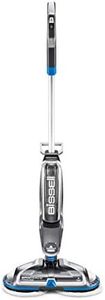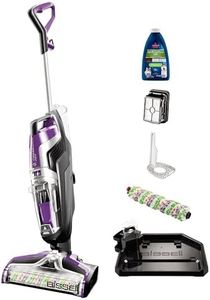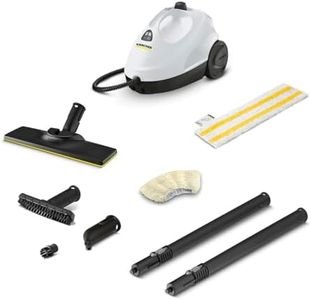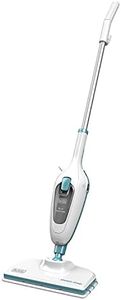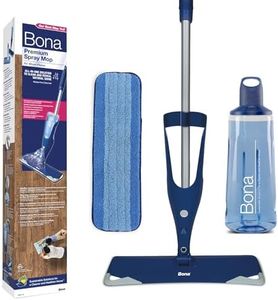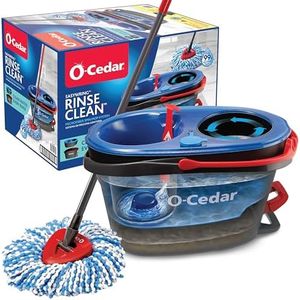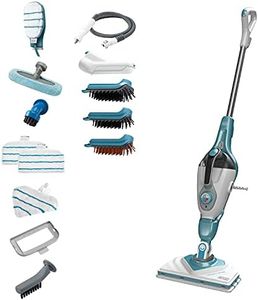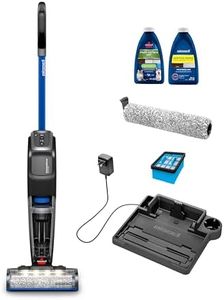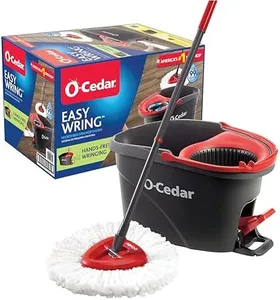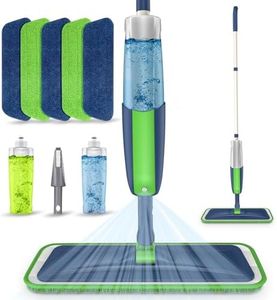We Use CookiesWe use cookies to enhance the security, performance,
functionality and for analytical and promotional activities. By continuing to browse this site you
are agreeing to our privacy policy
10 Best Tile Floor Mops
From leading brands and best sellers available on the web.Buying Guide for the Best Tile Floor Mops
Choosing the right mop for your tile floor can make cleaning much easier, more effective, and even help protect your tiles from damage. It’s important to find a mop that matches your tile type, your cleaning habits, and the size of the area you need to clean. With various mop types and features available, understanding what sets them apart can save you time and effort every time you clean. To help you decide, here's what to consider for each key specification.Mop TypeMop type refers to the overall style or design of the mop, such as string mops, flat mops, sponge mops, steam mops, or spray mops. This is important because the design influences how easy they are to use, what kind of mess they're best for, and whether they’re gentle enough for your tiles. For example, string mops hold a lot of water and are good for bigger jobs but can be harder to wring out, while flat mops are lightweight and good for daily cleaning. Steam mops use hot steam to clean, which is great for sanitizing but not suitable for all tile finishes. To pick the right one, consider your tile’s surface (textured or smooth), your need for deep cleaning versus quick touch-ups, and whether you prefer mopping with or without chemicals.
Mop MaterialThe material of the mop head (for example, microfiber, cotton, or sponge) matters because it affects how much dirt and water the mop can hold, how well it scrubs, and how safe it is for your tiles. Microfiber is excellent at trapping dirt and gentle on most tile finishes, while cotton is absorbent but might leave lint behind. Sponge mops are great for smooth surfaces but can wear out quickly. Choose microfiber for versatility and easy maintenance, cotton if you need high absorbency, and sponge if you have small, flat tile areas to clean.
Mop Head Size & ShapeThe size and shape of the mop head impacts how much area you can clean at once and how easily you can reach into corners and tight spaces. Larger mop heads are good for big, open rooms, while smaller or angled heads are better for cleaning around furniture and in small spaces. Flat, rectangular heads are efficient for covering wide, straight sections of floor, while circular or triangular heads are better for maneuvering into corners. Think about the layout of your space and go for a size and shape that fits where you’ll clean most often.
Handle Length and AdjustabilityThe length of the mop handle affects your comfort and how easily you can reach different areas, including under furniture. Adjustable handles let you set the height to your preference, preventing back pain and making the mop comfortable for different users. If you’re tall or plan to share the mop with others, an adjustable handle is especially useful. Choose a handle length that allows you to mop without bending over and consider adjustability for maximum comfort.
Ease of WringingWringing is the process of removing excess water from the mop head, which is crucial since tile floors shouldn’t be overly wet. Some mops come with built-in wringers on the handle or as part of the bucket, while others require you to twist the head manually. Easy-to-wring mops save effort and keep your hands drier. If you want a mess-free experience and don’t like handling wet mop heads, look for mops with user-friendly wringing systems.
Refill and Maintenance OptionsSome mop heads are disposable, some reusable and washable, and some need special replacements. This matters for long-term use and convenience. Washable, reusable heads reduce waste and are cost-effective but need to be cleaned after use. Disposable heads are convenient but may add up in cost and waste. Check if refills are easy to find and how simple it is to care for your mop—especially if you plan to use it often.
Water or Steam UsageSome mops use plain water, some can be paired with cleaning solutions, and others (like steam mops) use heated vapor. This affects how deep the cleaning is and whether you can sanitize your floors without chemicals. Steam mops are great for sanitizing but check if your tile can handle heat. Traditional mops with water and cleaning solution work for general cleaning. Choose based on your need for sanitizing versus regular cleaning and the requirements of your tile surface.

